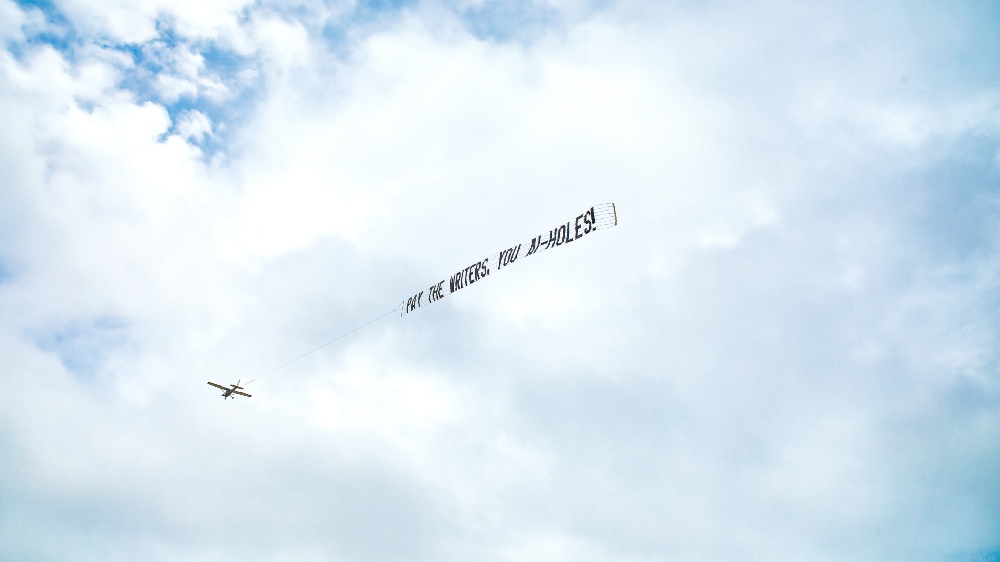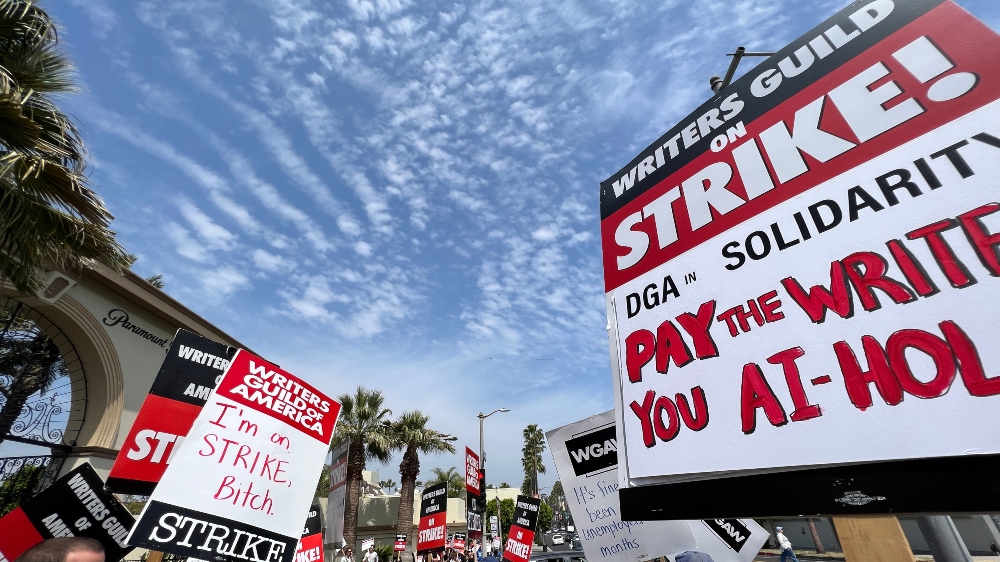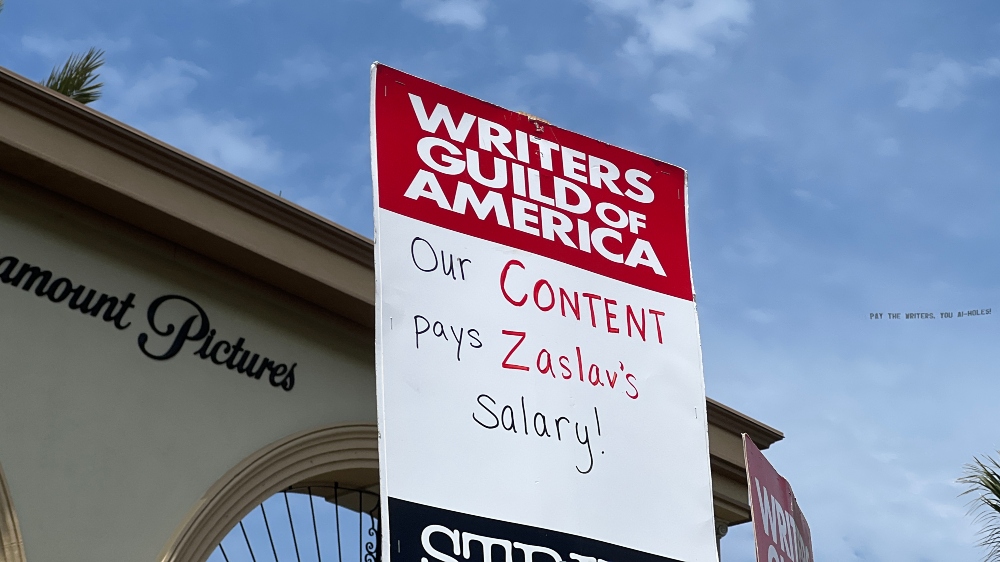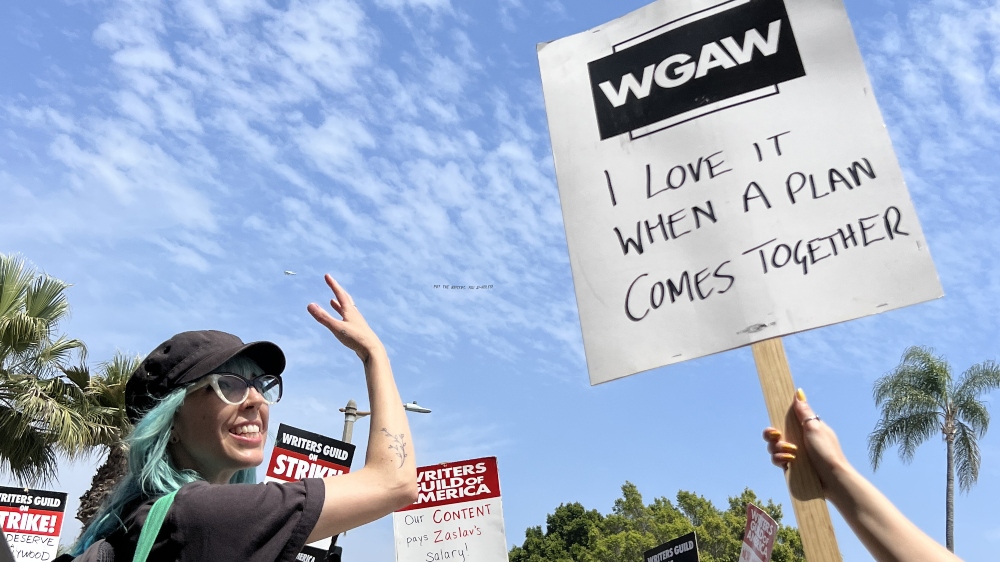
In the midst of no discernible movement regarding the Writers Strike, the Supreme Court has, perhaps inadvertently, weighed in with a decision that could, at least, affect the AI issues that are currently in play.
In a ruling issued earlier this week, the Court, in a surprising 7-2 majority, sided with photographer Lynn Goldsmith, and against the Andy Warhol Foundation, over the use of her 1981 Prince photo.
Warhol had given the picture his trademarked Marilyn Monroe/Campbells Soup treatment, but the colloquial use of “trademarked” here came up against what the Court determined was Goldsmith’s actual copyright protection, saying that her “original works, like those of other photographers, are entitled to copyright protection, even against famous artists.”
The court evidently only “considered [the] sole question of whether the Warhol Foundation’s claim of so-called fair use of the photo was sufficient to defend against Goldsmith’s claim of copyright infringement because Warhol’s artwork was ‘transformative’ and conveyed a different meaning or message than the original photo.”
The Court held that while such transformations may still be within the parameters of “fair use,” — if that use is transformative enough — in this case, the original picture, and the Warhol version, “share substantially the same purpose, and the use is of a commercial nature.”
You can see where this is going: What are the implications for AI?

One of the WGA’s so-far unaddressed demands, of course, is over the use — or abuse — of AI as the “original author” of an idea or story, thus consigning screenwriting to a job of rewriting and doctoring, and thereby leaving “authorship” in the hands of the studios when it comes to paying for ideas or other IP.
That may be somewhat different than what the Court addressed in the Warhol case, but then again — where would AI be getting its ideas? The trick, though, might be to actually prove one’s work was being taken without their approval, or was the actual basis for something “similar,” and short of widespread watermarking technologies, proving such provenance — unlike having two big pictures of the late Prince side by side for the judges to mull — would be a lot trickier.
Actor Justine Batemen, in a current op-ed for the reconstituted Newsweek, speaking not only as a DGA and WGA member, but a former SAG negotiator herself, thinks that tricky or not, that issue must be addressed “now or never,” expressing alarm at the studios’ seeming unwillingness to budge in this regard.
The dystopic road ahead, she imagines, “starts with AI-written scripts and digitally-scanned actors, either image or voice actors.” This scanning is already in practice; in fact, some talent agencies are actively recruiting their clients to be scanned. What this would mean for the actor is that they would get 75 cents on the dollar, and their digital image can be triple and quadruple booked. Of course, you’re not getting the actor; you’re getting a digital copy of them.
“The next step will be films customized for a viewer based on their viewing history, which has been collected for many years. Actors will have the option to have their image ‘bought out’ to be used in anything at all. Viewers will be able to ‘order up’ films — for example, ‘I want a film about a panda and a unicorn who save the world in a rocket ship. And put Bill Murray in it.'”

While we still may be far from such an instantly generated Bill Murray “action comedy,” it’s not hard to imagine the appeal for studios for such “movies,” or, um “products” (or, as she notes, an AI-generated “new season” of a show like Family Ties). You certainly don’t need to hire anyone to come in and make the thing, either above or below the line — it can be assembled by your HAL 9000, provided it has the right prompts.
Bateman adds that if these issues aren’t dealt with — and soon — this could be “the last time any labor action will be effective in our business. If we don’t make strong rules now, they simply won’t notice if we strike in three years, because at that point, they won’t need us.”
One wonders how the Supreme Court would rule on any of that, given this most recent copyright verdict.
Still, the existential stakes involved — above and beyond reslicing the streaming revenue pie (though that could get pretty existential too) — may go a long way toward explaining some of the not-too-optimistic buzz we’re hearing about the potential length of a strike.
One assistant producer at a company with some high-profile animation projects involving various A-listers said they’d been hearing — more than once, and from more than one agency — that studios may be prepared to have this go until at least November.

If this turns out to be the case, there will be a lot of missed mortgage payments and serious reconsideration of certain tuition fees in the fall. Never mind the “happy holiday” aspects.
Still, a sense of esprit de corps continues to infuse the very real, analog picket lines in front of studio gates, NY-based Upfront events, and other venues. In L.A., those lines were recently joined by a plane doing a flyover of each major studio/streamer, trailing a banner saying “PAY THE WRITERS, YOU AI-HOLES!”
Organized by DGA and “pre-WGA” member Jacob Reed, he described it as “an independent action made possible by lots of small donations from supporters. Some of the donations came from WGA members, but they also came from members of IATSE Locals 44, 600, 700, 705, 728, 871, 892, SAG/AFTRA, the Animation Guild, DGA, United Domestic Workers, California Teachers Association, International Federation of Professional and Technical Engineers, as well as talent agents, managers, and movie and TV fans all over the country. The average donation was $17.”
While the event didn’t seem to strike a “SURRENDER DOROTHY” level of fear into the various hearts occupying studio and network executive suites, it certainly added a new visual twist to what is increasingly shaping up to be a long, hot summer, and perhaps well beyond. Especially as the issues at play appear increasingly fundamental to the direction of the business as a whole.
 Mark London Williams is a BTL alum who currently covers Hollywood and its contents and discontents in his recurring “Across the Pond” dispatch for British Cinematographer magazine, contributes to other showbiz and production-minded sites, and musters out the occasional zombie, pandemic-themed, or demon-tinged book and script, causing an increased blurring in terms of what still feels like “fiction.”
Mark London Williams is a BTL alum who currently covers Hollywood and its contents and discontents in his recurring “Across the Pond” dispatch for British Cinematographer magazine, contributes to other showbiz and production-minded sites, and musters out the occasional zombie, pandemic-themed, or demon-tinged book and script, causing an increased blurring in terms of what still feels like “fiction.”
Mark’s Union Roundup column will appear regularly, and he welcomes both tips and feedback at [email protected]. He can also be found on Twitter @TricksterInk.





